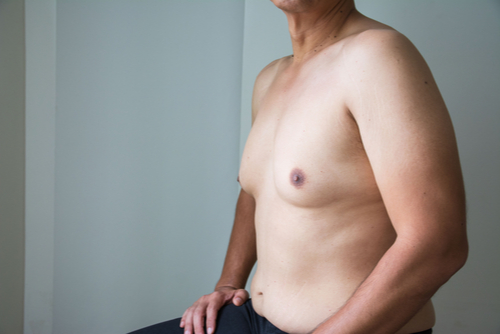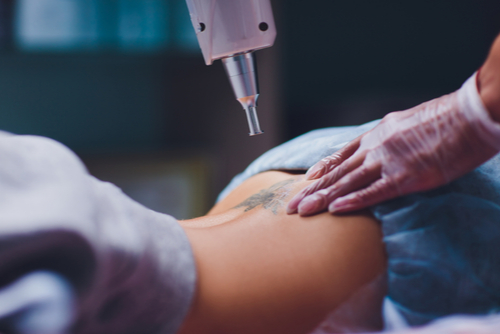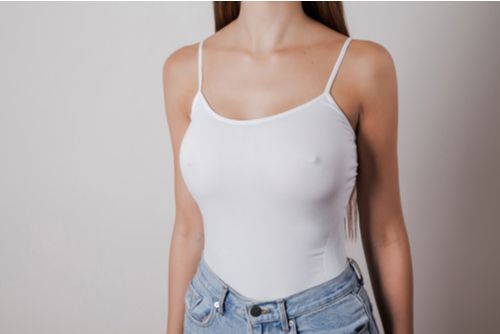
Chubby cheeks that last into adulthood are a common concern we see at The Gallery of Cosmetic Surgery. Patients often feel that their cheeks make them look childish or bigger than they are. Before seeking professional advice, many patients will try losing weight and specialized exercises to try and get rid of chubby cheeks. In most cases, this just leaves the patients wondering how to reduce fat in the cheeks.First off, it is important to meet with a professional like Dr. Craig Jonov who can evaluate the cause of fuller cheeks. What looks like fat may instead be an overused masseter muscle or undefined bone structure. Determining these aspects of your anatomy will allow Dr. Jonov to give the best recommendations. If extra, stubborn fat in the cheeks is the issue, the most effective procedure is buccal fat removal, or cheek reduction. This procedure uses incisions inside the mouth to remove small amounts of fat from the buccal fat pad in the cheeks. This can create a more defined, slimmer appearance. Occasionally, Dr. Jonov may recommend liposuction of the cheeks, though this is in rare cases. Sometimes, cheek filler or cheek implants will provide the necessary alterations. To schedule a consultation, call us at 425-775-3561. You can also reach us online using our contact form, chat, or Price Simulator™.

A rhinoplasty, or nose job, is one of the most popular procedures among teenagers. While most plastic surgeries are off-limits to people under 18, there are some exceptions for procedures that have a medical basis or correct deformities. For some people under eighteen, a rhinoplasty may fix a deviated septum or address breathing problems. It also can correct cosmetic issues at the same time. Even in these cases, there are age requirements. What age can you get a nose job? Generally, patients under 16 cannot get a nose job. This is because the nose does not fully form until between the ages of 16 and 18. Only in severe circumstances where the medical benefits of the surgery outweigh other risks will someone under 16 get nose surgery. This is generally in cases of facial deformity, extreme deviated septum, or severe sinus problems. At 16, patients may begin inquiring about rhinoplasty. Parental consent is required if under 18. Additionally, some patients may not be good candidates if Dr. Jonov determines that their nose has not stopped growing yet. If this is the case, the patient may need to wait until they are 18. This is best decided during a consultation with Dr. Jonov at The Gallery of Cosmetic Surgery. Once 18, patients have no restrictions in seeking rhinoplasty as the structures should be fully formed. To learn more and schedule a consultation, call us at 425-775-3561. You can also reach us online via chat, Price Simulator™, or contact form.

Gynecomastia is a condition where male breast tissue swells or overgrows. This usually occurs due to hormonal imbalances and there is not always a clear medical treatment. While the condition may go away without medical or surgical treatment, occasionally men are left with an overgrown chest. However, without examination by a medical professional, it can be difficult to tell if you have gynecomastia. How to know if you have gynecomastia? First off, your medical history can indicate whether you have a higher risk of developing gynecomastia. For example, certain medications can cause gynecomastia as well as medical conditions like hyperthyroidism and hypogonadism. Adequately treating these conditions, or switching medications may lead to improvement. Sometimes a small surgical procedure may be necessary to remove extra skin. Secondly, certain stages of life can make a man more susceptible to gynecomastia. In puberty, gynecomastia commonly occurs and later resolves. Additionally, men over 50 have a higher chance of having gynecomastia. These are eras in your life when hormones naturally fluctuate which can cause the condition temporarily. Sometimes, however, gynecomastia may have no clear cause. It usually will not respond to diet or exercise and may persist even with weight loss. This is when gynecomastia surgery can remove this extra skin and tissue to correct the overgrowth. To schedule a consultation, call us at 425-775-3561. You can also contact us online using our chat, contact form, or Price Simulator™.

Swelling is a common side effect of any surgical procedure, including otoplasty. When it comes to facial plastic surgery like otoplasty, patients often want it to go away as quickly as possible since it is more difficult to conceal. Patients often want to know how to reduce swelling after otoplasty surgery. Dr. Jonov will provide recovery instructions that will help you stay comfortable and reduce swelling. He may also provide other tips for reducing swelling. First, you may not see too much swelling immediately after surgery. Swelling will usually set in gradually over two or three days. After worsening, it will resolve over the next couple of weeks. Normally, it becomes concealable after five to seven days. To help reduce swelling, Dr. Jonov often recommends sleeping with your head elevated and avoiding bending over or similar movements. This will keep blood from rushing to your head which can worsen swelling after otoplasty surgery. Secondly, you should avoid ibuprofen and aspirin based painkillers because they can worsen swelling. While it may be okay to take these in certain cases, you should only use them under Dr. Jonov’s direction and limit their use. To manage pain and symptoms, Dr. Jonov will prescribe other medications. Finally, you should limit your activity for the first few days to prevent swelling. Doing too much too fast can lead to worsened swelling and bruising, especially within the first week of surgery. Dr. Jonov will evaluate when you can return to all activities. To schedule a consultation, call us at 425-775-3561. You can also contact us online using our Price Simulator™, chat, and contact form.

Tattoos are designed to be a permanent fixture of our skin. In some cases, people may want to remove tattoos for a variety of reasons. There are few ways to effectively remove or fade a tattoo. Among one of the best ways to remove a tattoo is using a laser. Laser tattoo removal uses a laser to target the pigment in your tattoo. Over time, the tattoo ink will absorb the laser and fragment on the molecular level. To us, this will appear as fading. However, can lasers totally remove the tattoo? Can you still see a tattoo after laser removal?To answers these questions, your master esthetician will need to see your tattoo and skin. Certain colors and types of tattoo inks respond better to laser tattoo treatment than others. If your tattoo is old, you will also likely see better results following tattoo removal. Occasionally, it is possible to see a tattoo, even after laser treatments. This may indicate that you require more treatments.Some patients who intend to get another tattoo over top only want to see some fading of their tattoo. Laser tattoo removal can also achieve this. Typically, laser tattoo removal requires multiple sessions to see the best results. Therefore, if your goals are to fade the tattoo, you may need fewer sessions than someone who wants to totally remove the tattoo. To learn more and schedule, call us at 425-775-3561. You can also contact us online via our Price Simulator™, contact form, and chat.

As one of the most popular cosmetic surgeries, plastic surgeons continue to innovate upon breast augmentation. With new types of breast implants and less invasive surgical techniques, patients can garner better results today than in the past. One of the most exciting revolutions in breast augmentation surgery is the development and pioneering of transaxillary breast augmentation. What is transaxillary breast augmentation? Transaxillary breast augmentation refers to a surgical technique where a cosmetic surgeon places breast implants through an incision in the armpit. This keeps scarring away from the breasts, which is an exceedingly popular benefit of the technique. At first, cosmetic surgeons placed only saline breast implants with this method. However, further innovation has made it possible to place silicone breast implants during transaxillary breast augmentation for good candidates. Additionally, the position of the armpit allows surgeons to place breast implants under the muscle without excising the muscle. This less invasive and minimal technique can lead to a less painful and easier recovery. While the muscle will still need to stretch, transaxillary breast augmentation can reduce the overall trauma to the chest muscle. To learn more about transaxillary breast augmentation and schedule a consultation, call us at 206-787-0784. You can also contact us online via our Price Simulator™, chat, and contact form.

As part of a transgender transition, a trans woman may undergo surgical procedures to achieve a more feminine look. This can include breast augmentation, a Brazilian butt lift, and facial feminization. While the others are commonly performed procedures in cisgender women, what is facial feminization surgery?Facial feminization is a surgery that combines multiple procedures to create a more feminine face. It is customized for every individual patient and no two procedures will look exactly the same. Examples of surgeries that are sometimes performed during facial feminization include:
Dr. Jonov will examine your face and goals to determine which procedures will provide you the best results. Facial feminization is highly customizable. It keeps patients looking like themselves, only a more feminine version. The length of the surgery will vary on the number and type of procedures. However, you can expect around 2-4 hours.To schedule a consultation with Dr. Craig Jonov, call us at 425-775-3561. You can also connect with us online using our Price Simulator™, chat, or contact form.

Juvederm makes a variety of hyaluronic acid fillers for various areas of the face including the cheeks, folds, and lips. Lip filler continues to be one of the most popular non-surgical procedures in the United States. Juvederm is one of the top filler manufacturers for lips. However, Juvederm offers many filler options. What Juvederm is best for lips?Most Juvederm fillers can achieve a good result in the lips. As far as what filler was designed specifically for use in the lips, that would include Juvederm Ultra and Juvederm Ultra Plus. The injectors at The Gallery of Cosmetic Surgery routinely use Juvederm fillers in the lips and can determine which Juvederm product will give you the best results.Juvederm Ultra Plus consists of a thicker formula than Juvederm Ultra. It also tends to last longer. This thicker formula may not suit all lip filler patients or goals. Patients who want extremely subtle results or who want a more malleable filler may find that Juvederm Ultra best serves their needs.In general, Juvederm lip fillers last between three months and one year depending on the filler you receive and biological factors. Juvederm can provide subtle to dramatic results and is an all around versatile product for lip filler injections. To learn more about Juvederm and schedule a consultation, call us at 425-775-3561. You can also contact us online using our contact form, chat, or Price Simulator™.

The VI Peel is a high-end chemical peel designed to deliver medium depth results with only mild to moderate peeling. Peeling after a chemical peel largely depends on your skin type, if you’ve had peels before, and various other factors. Despite this, it is natural for patients to wonder, “How long do you peel with a VI Peel?” On average, patients will begin peeling around Day Three following their VI Peel in Bellevue. They then usually peel through Day Five. This means that if you have a VI peel Wednesday, you can expect to peel through the weekend. While peeling will vary between patients, the VI Peel is known for minimal peeling post-procedure and providing full results in a week. The VI Peel also comes with a curated kit of aftercare. This aftercare was specifically formulated to work with the VI Peel. It soothes the skin, promotes minimal skin peeling, and protects the skin as it heals after the peel. This makes the VI Peel unique and sets it apart from other chemical peels. After a consultation with a master esthetician at The Gallery of Cosmetic Surgery, they can provide a more personalized timeline for your VI Peel aftercare. In general, the VI Peel does not cause patients to peel for more than a few days. To schedule a consultation, call us at 425-775-3561. You can also reach us online via Price Simulator™, chat, and our contact forms.

Colloquially referred to as “bat wings”, this arm appearance can occur due to many factors such as aging, weight loss, and weight gain. Since an arm lift can achieve thinner, better proportioned arms, many patients become interested in the results of an arm lift. One of the most commonly asked questions is, “Does arm lift surgery leave scars?”Arm lift surgery does leave scars. One of the realities of arm lift surgery is that scars are not as easy to hide as those from other plastic surgeries like breast augmentation or tummy tuck. Arm lift scars usually are on the back or inside of the arms. Not often visible at first glance, the scars are not always immediately obvious. Luckily, not every patient will develop noticeable scars. There are also many ways you can minimize the look of scarring during healing. Also, caring for your scars and keeping them protected from the sun and elements during healing can aid healing. Additionally, Dr. Jonov will make every effort to keep scars as thin, short, and inconspicuous as possible.For many patients, arm lift scars are worth it and they find themselves happier with their new arms following surgery. Dr. Jonov can advise you on your options for achieving the arms you want. To schedule a consultation, call us at 425-775-3561. You can also reach us online using our chat, contact form, or Price Simulator™. 











Recent Comments